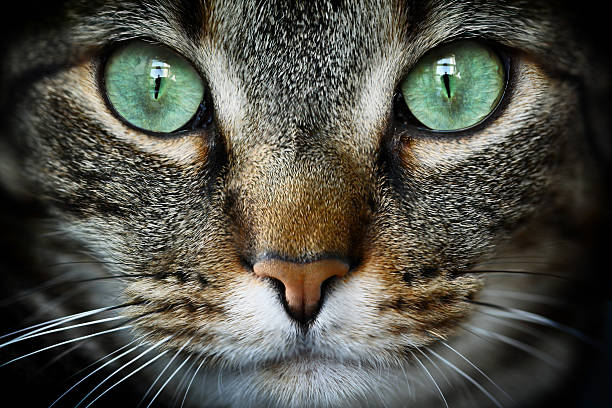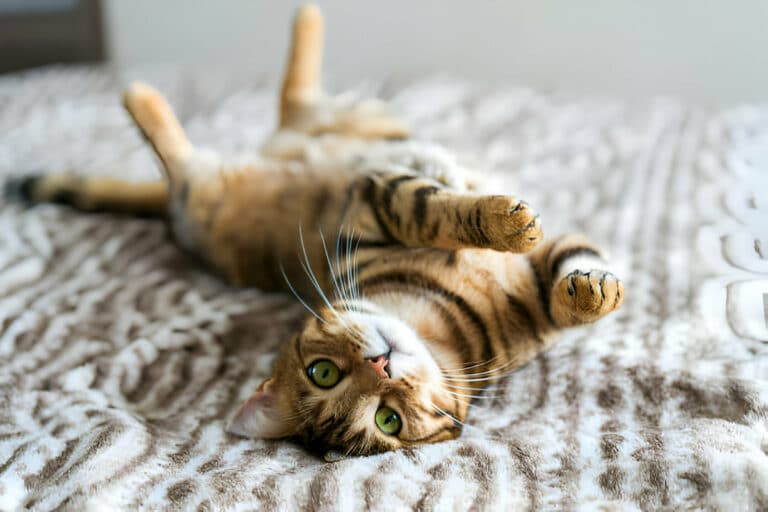Exploring The Different Personalities And Behaviors Of Domestic Cats
Over the centuries, cats have maintained a mysterious and enigmatic reputation. Their behaviors and personalities vary greatly from one feline to another, making them intriguing and complex creatures to study. In this blog post, we probe into the diverse personalities and behaviors of domestic cats, shedding light on their unique characteristics and tendencies. From aloof and independent to affectionate and playful, each cat has its own distinct traits that make them fascinating companions to observe and learn from. Join us as we uncover the captivating world of domestic cats and gain a deeper understanding of what makes these beloved pets so endlessly intriguing.
The Spectrum of Cat Personalities
The Sociable Cat
One of the categories in which domestic cats can be classified is the sociable cat. These feline companions are known for their outgoing and friendly nature. They enjoy being around people and other animals, and are often seen seeking attention and affection from their human companions.
The Independent Cat
Independent cats are another distinct type of feline personality. These cats are known for their self-reliant and self-sufficient nature. They are content with their own company and do not seek constant attention from their owners. They are often comfortable spending time alone and may not be as affectionate as other cats.
Personalities
Within the category of independent cats, there is a wide range of personalities. Some independent cats may still enjoy occasional interactions with their owners, while others may prefer to keep to themselves most of the time. Understanding the individual personality of your cat is vital for providing them with the care and environment that best suits their needs.
The Playful Cat
Spectrum
A playful cat is a wonderful addition to any household. These feline companions are energetic, curious, and always ready for a game. Playful cats enjoy interactive toys, chasing after objects, and engaging in physical activities. Keeping a playful cat entertained and mentally stimulated is important for their overall well-being.
A
The Shy or Timid Cat
Sociable
This category includes cats that are more reserved and cautious in their interactions. Shy or timid cats may take longer to warm up to new people or environments. They may hide when strangers visit or prefer to observe from a distance before making contact. Patience and understanding are key when caring for a shy or timid cat, as they may require extra time and reassurance to build trust and confidence.
Behavioral Patterns and Environmental Influences
The Role of Genetics in Cat Behavior
Many aspects of a cat’s behavior can be attributed to genetics. Certain breed tendencies, such as the high energy levels of the Siamese or the laid-back nature of the Ragdoll, are often passed down through generations. Genetics can also influence traits like sociability, aggression, and fearfulness in cats.
The Impact of Early Socialization
One of the most critical periods in a cat’s life is the early socialization phase. Kittens that have positive interactions with humans and other animals during this time are more likely to grow up to be friendly and well-adjusted adults. Lack of proper socialization during this period can lead to shyness, fearfulness, or aggression in cats.
With early socialization, kittens learn imperative social skills, build confidence, and develop a sense of security. This exposure to different people, environments, and experiences helps shape their behavior and responses to various stimuli later in life.
The Effects of Living Environments on Behavior
Another crucial factor that influences a cat’s behavior is its living environment. Cats that live in enriched environments with plenty of mental and physical stimulation are often more active, curious, and less likely to exhibit behavior issues. On the other hand, cats in stressful or confined environments may display anxious, aggressive, or destructive behaviors.
Environmental factors, such as available space, access to resources like food and water, interaction with humans, and exposure to other animals, play a significant role in shaping a cat’s behavior and overall well-being.
Communication and Interaction
Understanding Feline Body Language
An crucial aspect of understanding your cat’s behavior is recognizing their body language cues. An upright tail with a slight curve at the tip indicates a friendly and content cat, while a puffed-up tail is a sign of aggression or fear. Pay attention to their ears, eyes, and posture to interpret how your cat is feeling.
Vocalizations and What They Mean
Communication through vocalizations is another way cats express themselves. Meowing, purring, hissing, and growling are common sounds cats make to communicate with humans and other animals. Meows can vary in pitch and tone, indicating different needs or desires. Understanding these vocal cues can help strengthen the bond between you and your cat.
Communication through vocalizations is an crucial part of a cat’s behavior repertoire. Cats use different sounds to communicate their needs, emotions, and intentions to their owners and other animals. By paying attention to the tone, pitch, and frequency of their meows, purrs, hisses, and growls, you can better understand what your cat is trying to tell you.
Interactions with Humans and Other Animals
Understanding how your cat interacts with humans and other animals can provide valuable insights into their personality. Cats may approach humans for affection, play, or as a sign of trust. When considering interacting with other animals, cats may display social behaviors such as grooming, head-butting, or stalking, depending on their relationship with the other animal.
Interactions with humans and other animals play a significant role in a cat’s social behavior. Cats have diverse ways of interacting with their human companions and other pets. Observing how your cat approaches and engages with different individuals can help you understand their preferences, boundaries, and social dynamics within your household.
Managing and Modifying Feline Behavior
Training and Behavioral Correction
The key to training and correcting undesirable behaviors in cats lies in consistency and positive reinforcement. Not all cats are motivated by treats, so finding the right reward for your individual feline is crucial. It is important to catch your cat in the act of displaying a bad behavior for effective correction and never use punishment as a form of training. With patience and persistence, behaviors can be modified successfully.
Enrichment Strategies for Indoor Cats
To keep indoor cats mentally stimulated and physically active, enrichment strategies are important. Providing interactive toys, climbing structures, puzzle feeders, and even a window perch can help simulate their natural instincts and prevent boredom. Toys that mimic hunting and feeding behaviors are particularly beneficial for indoor cats.
Training cats to use puzzle feeders or offering food through interactive games can mimic a cat’s natural hunting instincts and provide mental stimulation. Rotating toys and introducing new ones periodically can prevent boredom and keep cats engaged in play, reducing the likelihood of destructive behaviors due to understimulation.
To wrap up
As a reminder, domestic cats exhibit a wide range of personalities and behaviors that make them unique and fascinating creatures. From aloof and independent to affectionate and playful, each cat has its own individual quirks and traits. By exploring and understanding these differences, cat owners can better cater to their feline companions’ needs and provide the best possible care for them. Whether your cat is a curious explorer, a social butterfly, or a laid-back lounger, it’s important to appreciate and embrace their distinct personalities to cultivate a strong and fulfilling bond with your furry friend. So, next time you observe your cat’s behavior, take a moment to appreciate the complexity and diversity of our beloved feline companions.
FAQ
Q: What are the different personalities of domestic cats?
A: Domestic cats can have a wide range of personalities, from curious and playful to independent and aloof. Some cats are known to be affectionate and enjoy cuddling, while others prefer to keep their distance and observe from afar. It’s vital to understand that each cat is unique, and their personalities can vary based on factors such as breed, upbringing, and socialization.
Q: How do the behaviors of domestic cats vary?
A: The behaviors of domestic cats can vary depending on their individual personalities and experiences. Common cat behaviors include hunting, grooming, scratching, and marking territory. Cats also display communication through vocalizations, body language, and scent marking. Understanding these behaviors can help cat owners better care for and communicate with their feline companions.
Q: How can I best explore and understand my cat’s personality and behavior?
A: To explore and understand your cat’s personality and behavior, spend quality time observing and interacting with them. Pay attention to how they react to different stimuli, such as new environments, toys, or people. Engage in play sessions to see what activities they enjoy the most. Additionally, consulting with a veterinarian or animal behaviorist can provide valuable insights and guidance on your cat’s unique traits and needs.







